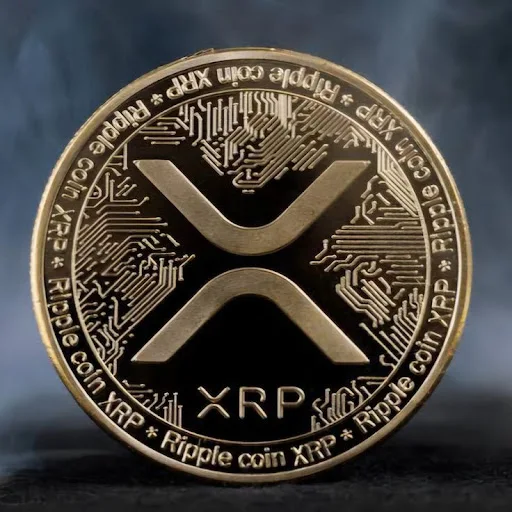Title: CME Launches Regulated XRP Futures: What It Means for Crypto Traders and the Road to a Spot XRP ETF
The cryptocurrency derivatives market just took a major step forward with the introduction of CME XRP futures, marking a significant milestone in the broader adoption of Ripple’s XRP in traditional finance. The CME Group, the world’s largest futures and options exchange, officially launched XRP futures contracts on May 19, following regulatory approval. This launch places XRP alongside other leading crypto futures products like Bitcoin (BTC) and Ethereum (ETH) on the CME platform.
This development has stirred considerable excitement among investors, crypto enthusiasts, and market analysts, especially due to the potential implications for a spot XRP ETF in the near future. Let’s explore what the CME XRP futures launch means, how the market responded, and why it might be the precursor to even bigger things for XRP.
XRP Futures Go Live on CME
The announcement came at the end of April 2025, when CME confirmed its intention to launch XRP futures trading starting May 19, subject to final regulatory approval. That approval was granted, and the contracts began trading as planned.
According to CME’s official statement, the XRP futures contracts are available in two sizes:
Micro contracts: Representing 2,500 XRP per contract
Standard contracts: Representing 50,000 XRP per contract
Both contracts are cash-settled, meaning no physical XRP is exchanged. Instead, settlements are based on the CME CF XRP-Dollar Reference Rate, a price benchmark calculated daily at 4:00 PM London time. This reference rate reflects the average price of XRP in U.S. dollars across multiple major crypto exchanges.
Strong Market Reception: $19 Million in First-Day Volume
The launch of CME XRP futures drew immediate market interest. On its first day, the contracts saw a trading volume exceeding $19 million, and the momentum continued with over $10 million on the second day. These numbers demonstrate a high level of demand from both institutional and retail investors.
In fact, XRP futures on CME outperformed Solana (SOL), which saw $12.3 million in trading volume during its own first day of futures trading. This suggests XRP still commands strong market attention and liquidity, despite ongoing debates over regulatory classification and its previous legal battles.
What XRP Futures Mean for Traders and Institutions
For traders, the availability of XRP futures on a regulated exchange like CME offers several benefits:
Hedging opportunities for portfolios that include XRP
Leverage and shorting capabilities in a secure and compliant environment
Price discovery and transparency through a reliable reference rate
Access for institutional investors who prefer regulated platforms over crypto-native exchanges
With this development, CME continues to solidify its position as a gateway between traditional finance and the rapidly evolving crypto asset class.
A Stepping Stone Toward a Spot XRP ETF?
Perhaps the most intriguing implication of the XRP futures launch is its potential impact on the approval of a spot XRP ETF (Exchange-Traded Fund) in the United States. This theory stems from the precedent set by Bitcoin and Ethereum. Both BTC and ETH spot ETFs only gained regulatory traction after the successful launch and operation of futures-based ETFs.
Nate Geraci, President of the ETF Store, echoed this sentiment in a recent post. He stated that it is likely only a matter of time before a spot XRP ETF is approved, now that regulated futures trading is live. Geraci's comment reflects growing market optimism that XRP could soon follow the path of Bitcoin and Ethereum in obtaining ETF status, which would further increase institutional adoption.
XRP Price Holds Steady Despite Futures Volatility
Interestingly, despite the initial surge in futures trading volume and some outflows, the spot price of XRP has remained relatively stable, hovering around $2.35. This price stability indicates that the market may have already priced in the impact of the futures launch or is waiting for further developments such as ETF news or broader crypto market movements.
It’s also worth noting that futures markets can sometimes diverge from spot markets, especially in the early days of contract trading. Over time, as more liquidity enters the XRP futures markets, pricing dynamics may shift and more closely reflect broader market sentiment.
Why This Is a Big Deal for XRP and the Crypto Market
The launch of CME XRP futures represents more than just a new trading instrument. It symbolizes a growing acceptance of crypto assets in traditional financial markets and suggests a changing attitude toward Ripple and XRP, particularly after years of regulatory uncertainty.
Some key reasons this development matters:
Validation of XRP as a major digital asset: Being listed on CME elevates XRP's status alongside BTC and ETH.
Increased institutional involvement: Regulated futures products open the doors to pensions, hedge funds, and asset managers.
Improved market infrastructure: More robust tools for risk management and speculative strategies are now available.
Potential for ETF approval: Futures contracts have historically paved the way for ETF launches.
Final Thoughts: The Road Ahead for XRP
While it's still early days, the CME XRP futures launch could be a game-changer for Ripple and XRP investors. With strong initial volumes and institutional interest, XRP futures may quickly become a staple of the crypto derivatives landscape. More importantly, they could be the bridge toward a regulated spot XRP ETF, which would further legitimize XRP in the eyes of mainstream investors.
As always, crypto markets remain volatile, and investors should conduct thorough research before entering into futures contracts or any leveraged positions. Still, the launch of regulated XRP futures at CME is a positive signal that XRP is far from fading and may, in fact, be entering a new era of growth and institutional adoption.

Comments
Post a Comment